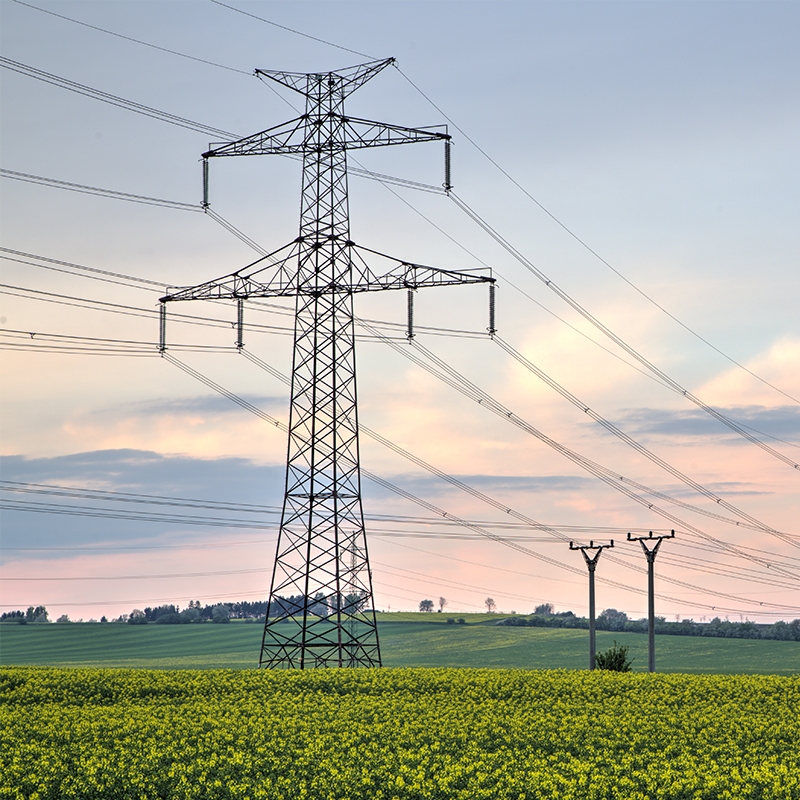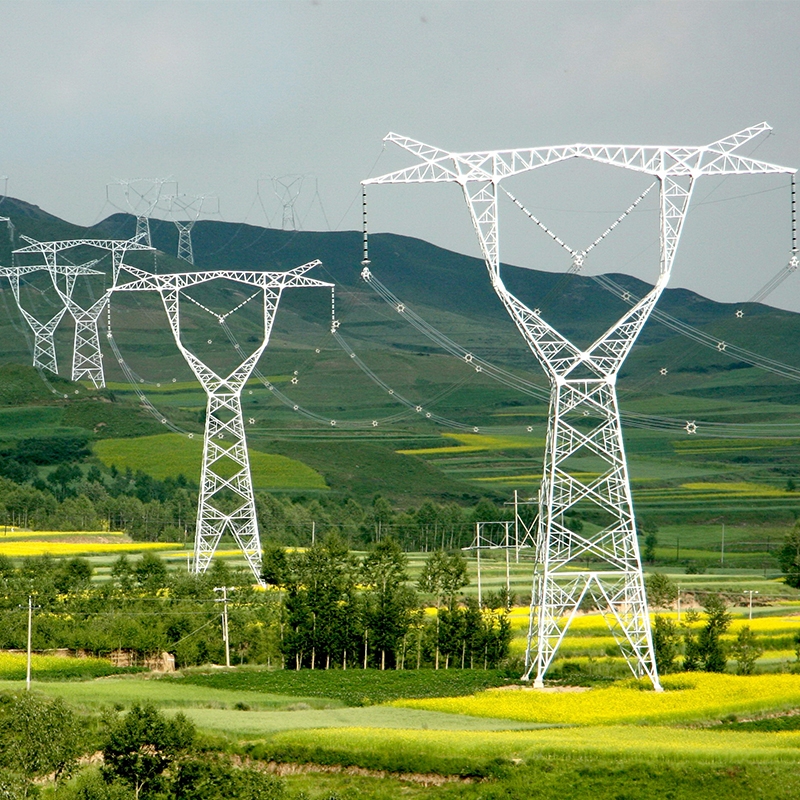A comprehensive explanation of 10kV (substation and box substation) distribution transformers
Distribution transformer, abbreviated as "distribution transformer". It refers to a static electrical appliance in the power distribution system that converts alternating voltage and current to transmit alternating electrical energy according to the law of electromagnetic induction. Distribution transformers generally refer to Power Transformers with a voltage level of 10-35kV (mostly 10kV and below) and a capacity of 6300KVA and below that operate in distribution networks and directly supply power to end users.
1. Basic introduction to Power distribution
1.1 Definition
A distribution transformer, abbreviated as "distribution transformer", refers to a static electrical device in a distribution system that converts alternating voltage and current according to the law of electromagnetic induction to transmit alternating electrical energy. In some regions, power transformers with voltage levels below 35 kilovolts (mostly 10KV and below) are referred to as "distribution transformers", or simply "distribution transformers". The place and location where a "distribution transformer" is installed is called a substation. Distribution transformers are preferably installed on poles or in the open air on the ground.
1.2 Structure
The editor will introduce the structure of oil-immersed distribution transformers. According to their structure, oil-immersed distribution transformers can be divided into the main body, oil storage tank, insulating bushing, tap changer, protection device, etc.
1.2.1 Ontology
The main body consists of three parts: the core, the windings and the insulating oil. The windings are the circuits of the transformer, and the core is the magnetic circuit of the transformer. The two constitute the core of the transformer, namely the electromagnetic part.
1.2.1.1 Iron core
The core is the main magnetic circuit part in a transformer. It is usually composed of hot-rolled or cold-rolled silicon steel sheets with a relatively high silicon content, a thickness of 0.35 or 0.5mm, and coated with insulating varnish on the surface. The core is divided into two parts: the core column and the yoke. The core column is equipped with windings, and the yoke is used to close the magnetic circuit. The basic forms of core structures include core type and shell type.
1.2.1.2 Winding
The winding is the circuit part of a transformer, usually made by winding insulated flat copper wire or round copper wire on a winding die. The windings are wrapped around the core column of the transformer. The low-voltage winding is on the inner layer, and the high-voltage winding is wrapped around the outer layer of the low-voltage winding. The low-voltage winding and the core, as well as the high-voltage winding and the low-voltage winding, are separated by sleeves made of insulating materials to facilitate insulation.
1.2.1.3 Insulating oil
The composition of transformer oil is very complex, mainly consisting of cycloalkanes, alkanes and aromatic hydrocarbons. In distribution transformers, transformer oil plays two roles: one is to insulate between the windings of the transformer, between the windings and the core as well as the oil tank. Secondly, when the transformer oil is heated, convection occurs, which plays a role in heat dissipation for the transformer core and windings. The commonly used transformer oil comes in three specifications: No. 10, No. 25 and No. 45. The grade indicates the temperature at which the oil begins to solidify below zero. For instance, "No. 25" oil means that this oil starts to solidify at minus 25℃. The specification of the oil should be selected according to the local climatic conditions.
1.2.2 Oil Storage tank
The oil storage tank is installed on the top cover of the oil tank. The volume of the oil storage tank is about 10% of that of the oil tank. There is a pipe connecting the oil storage tank and the oil tank. When the volume of the transformer expands or shrinks with the change of the oil temperature, the oil storage tank plays the role of storing and replenishing oil, ensuring that the core and windings are immersed in the oil. Meanwhile, due to the installation of oil storage tanks, the contact surface between oil and air has been reduced, thereby slowing down the deterioration rate of the oil.
There is an oil gauge on the side of the oil storage tank. Next to the glass tube, there are standard lines for the oil level height when the oil temperature is -30℃, +20℃ and +40℃, indicating the oil level height that the transformer that has not been put into operation should reach. The standard line mainly reflects whether the oil quantity of the transformer is sufficient when it operates at different temperatures.
The oil storage tank is equipped with breathing holes to enable the upper space of the oil storage tank to communicate with the atmosphere. When the transformer oil expands and contracts due to temperature changes, the air at the upper part of the oil storage tank can enter and exit through the breathing holes, and the oil level can rise or fall, preventing the oil tank from deforming or even being damaged.
1.2.3 Insulating sleeve
It is the main insulating device outside the transformer box. Most transformer insulating bushings adopt porcelain insulating bushings. The transformer, through high and low voltage insulating bushings, leads the high and low voltage windings of the transformer from inside the oil tank to outside, insulating the transformer windings from the ground (the casing and the core), and it is also the main component for fixing the leads to connect with the external circuit. High-voltage porcelain sleeves are relatively tall, while low-voltage porcelain sleeves are relatively short.
1.2.4 Tap changer
The device for changing the tap of the high-voltage winding of a transformer, by adjusting the tap position, can increase or decrease the number of turns of part of the primary winding to change the voltage ratio, thereby adjusting the output voltage. When a transformer is taken out of operation and disconnected from the power grid, and the output voltage is adjusted by manually changing the position of the tap changer, it is called no-load voltage regulation.
1.2.5 Protective device
1.2.5.1 Gas Relay
The gas relay is installed between the connecting pipe of the transformer oil tank and the oil storage cabinet, and is connected to the control circuit to form a gas protection device. The upper contact of the gas relay and the light gas signal form a separate circuit. The lower contact of the gas relay is connected to the external circuit to form heavy gas protection. The action of heavy gas causes the high-voltage circuit breaker to trip and sends out a heavy gas action signal.
1.2.5.2 Explosion-proof pipe
The explosion-proof pipe is a safety protection device for transformers, installed on the large cover of the transformer. The explosion-proof pipe is connected to the atmosphere. When a fault occurs, the heat will cause the transformer oil to vaporize, triggering the gas relay to send out an alarm signal or cut off the power supply to prevent the oil tank from bursting.
2. Classification
2.1 Classification by installation location
Distribution transformers are classified into indoor and outdoor types based on their installation locations. Outdoor installation is divided into platform 墎 type, tower type and floor-standing type (including prefabricated type).
2.1.1 Tower type
The tower type is a frame on which the transformer is installed on the pole. It is divided into single-bar type and double-bar type.
When the capacity of the distribution transformer is 30KVA or less (including 30KVA), a single-pole distribution transformer frame is generally adopted. Install the distribution transformer, high-voltage drop-out fuse and high-voltage lightning arrester on a concrete pole, and the pole body should be inclined 13°-15° in the opposite direction of assembling the distribution transformer.
When the capacity of the distribution transformer is between 50KVA and 315KVA, a double-pole distribution transformer platform is generally adopted. The distribution transformer platform is composed of a main concrete pole and another secondary auxiliary pole. The main pole is equipped with a high-voltage drop-out fuse and a high-voltage lead wire, while the secondary pole has a secondary reverse lead wire. The double-pole distribution transformer platform is sturdy through the single-pole distribution transformer.
The advantages of pole tower installation: less land occupation, no need for fences or barriers around, the live parts are higher than the ground, and accidents are less likely to occur. Disadvantages: A large amount of steel is used for the stand, and the cost is relatively high.
2.1.2 Pedestal type
The pier type is to build a square pier platform of 0.5 to 1 meter with bricks and stones under the transformer pole, and place the transformer on it. Transformers with a capacity of over 315KVA are generally installed.




